Wine enthusiasts know that preserving wine properly is essential to savoring its full flavor and aroma. When it comes to preserving your cherished wine collection, a wine refrigerator is an essential investment. A wine refrigerator is an indispensable tool for wine storage, and choosing the right one can make all the difference in your wine-tasting experience. But with various options available in the market, selecting the right one can be a daunting task. In this comprehensive guide, we will walk you through the crucial factors to consider when buying a wine fridge.
1. Capacity Selection
The first consideration when choosing a wine refrigerator is its capacity. You must determine how much wine you plan to store. Whether it's for personal use, a commercial establishment like a hotel or club, or for aging wine long-term, the cabinet's capacity matters.
-
Personal Use: If you're a wine enthusiast looking to store a moderate collection, a smaller capacity cooler will suffice. A small wine fridge 20-50 bottle capacity is suitable for most home collections.
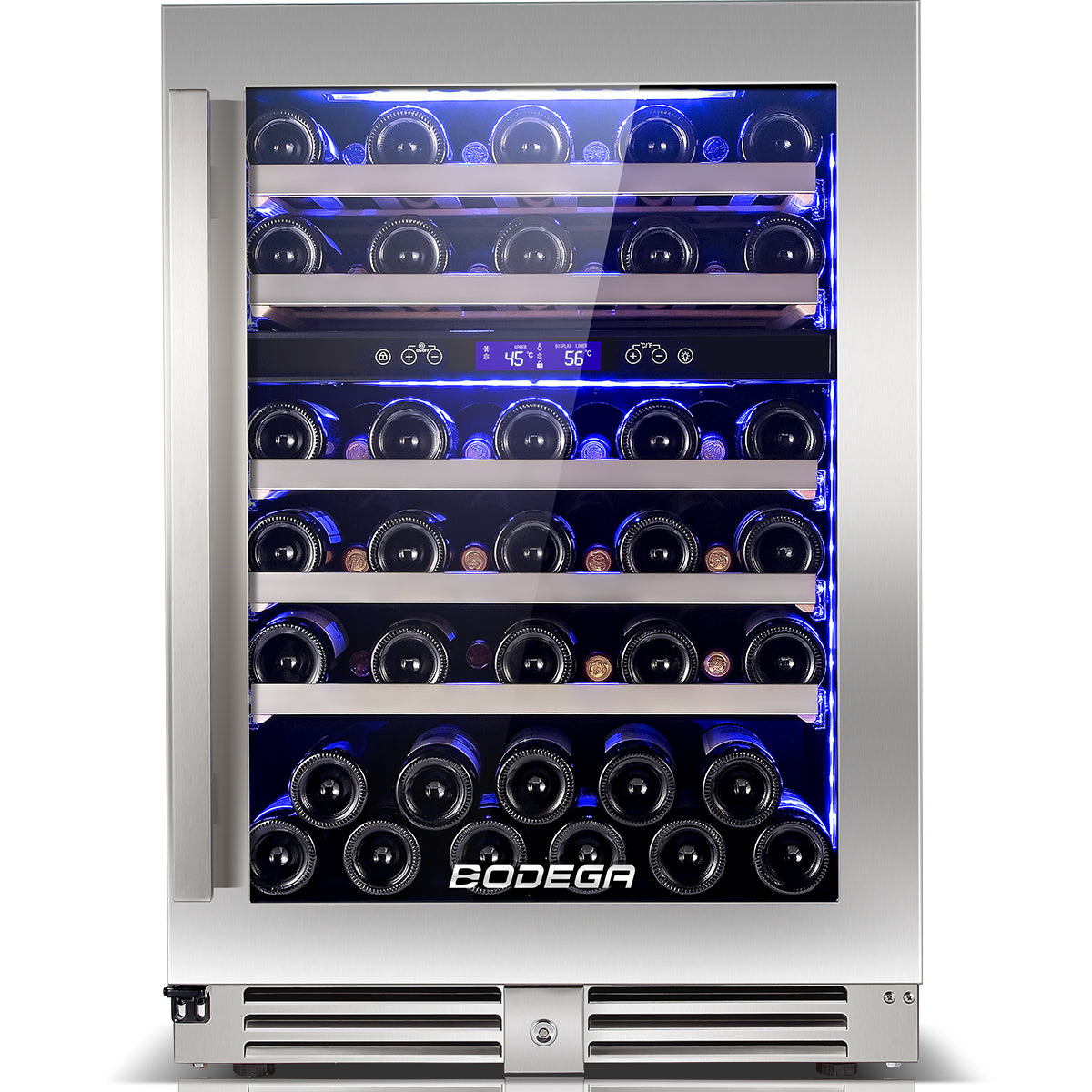
-
Commercial Use: For hotels, clubs, or restaurants with high wine turnover, a larger capacity fridge is recommended. Look for large capacity wine refrigerator that can accommodate over a hundred bottles to meet your storage needs.
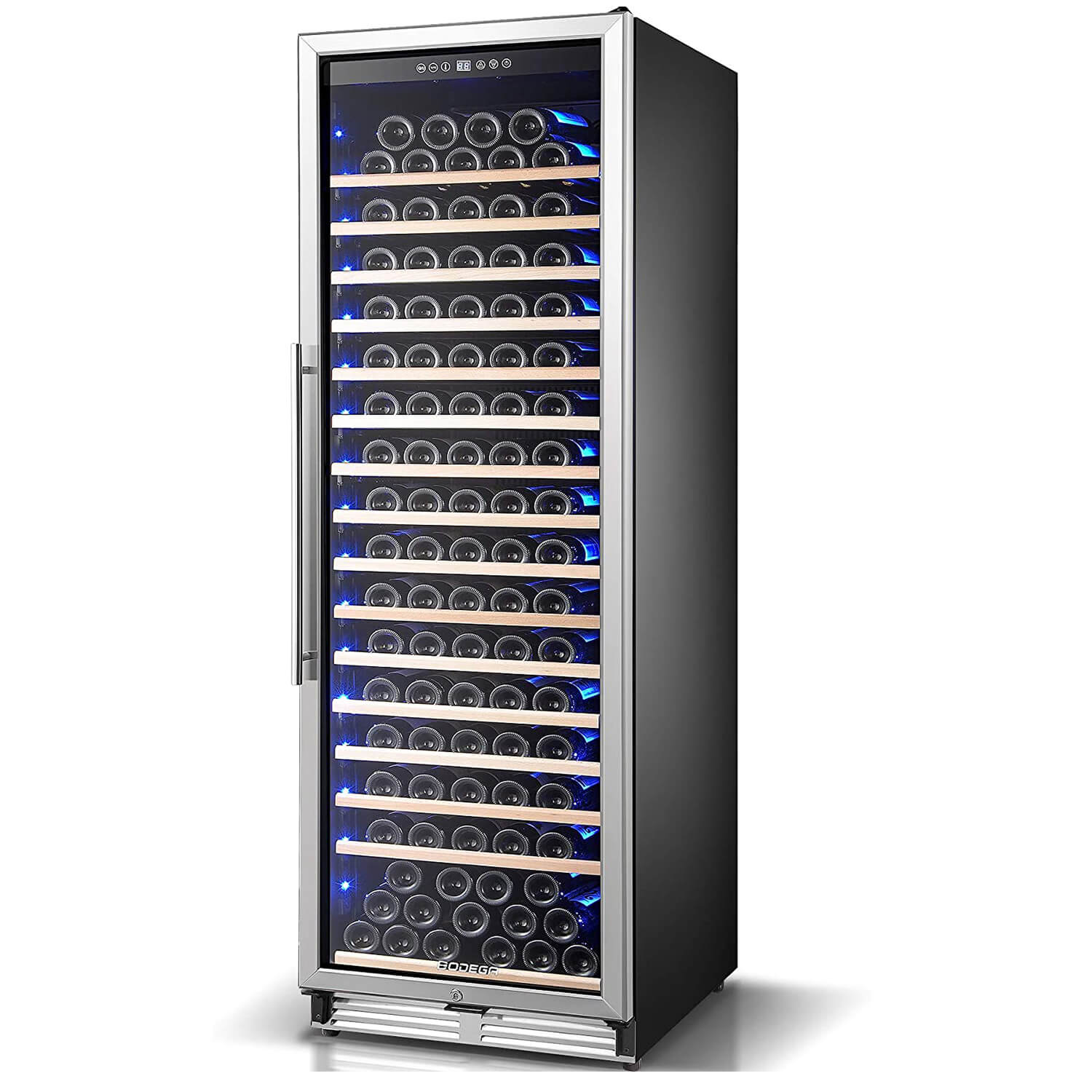
2. Compressor Wine Fridge vs. Electronic Wine Fridge
Understanding the difference between compressor and electronic wine refrigerator is crucial. Each has its advantages and disadvantages.
Compressor Wine Cooler
Compressor wine cooler are known for their ability to cool quickly and provide a stable environment similar to a wine cooler. Here's what you need to know:
-
Temperature Range: Compressor wine cooler typically offer a broader temperature range, from 5-22°C(47℉~71.6℉), making them suitable for various wine types.
-
Longevity: These wine fridges have a longer lifespan, usually lasting 8-10 years or more, ensuring your wines receive long-lasting protection.
-
Vibration Control: Opt for a cooler with a quiet compressor to prevent excessive vibrations that can harm your wine.
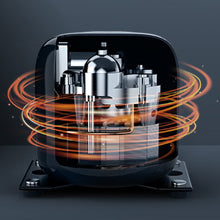
Electronic Wine Fridge
Electronic wine fridges have their own set of features:
-
Temperature Range: They typically have a narrower temperature range of 10-18°C(50℉~64.4℉), making them ideal for short-term storage needs.
-
Lifespan: Electronic wine coolers have a shorter lifespan, averaging 2-3 years.
When selecting an electronic wine coolers, pay close attention to the stability of the compressor, as a quiet compressor is essential to prevent wine disturbance due to vibrations.
see more: What Temperature Should a Beverage Cooler Be Set At?
3. Built-In or Freestanding
Another decision to make is whether you want a built-in or freestanding wine cabinet. Your choice should align with your home's aesthetics and available space.
-
Built-In Coolers: These coolers can enhance the visual appeal of your home but require proper planning and space allocation during installation.
-
Freestanding Coolers: Freestanding coolers offer more flexibility and are easier to install without the need for built-in spaces.
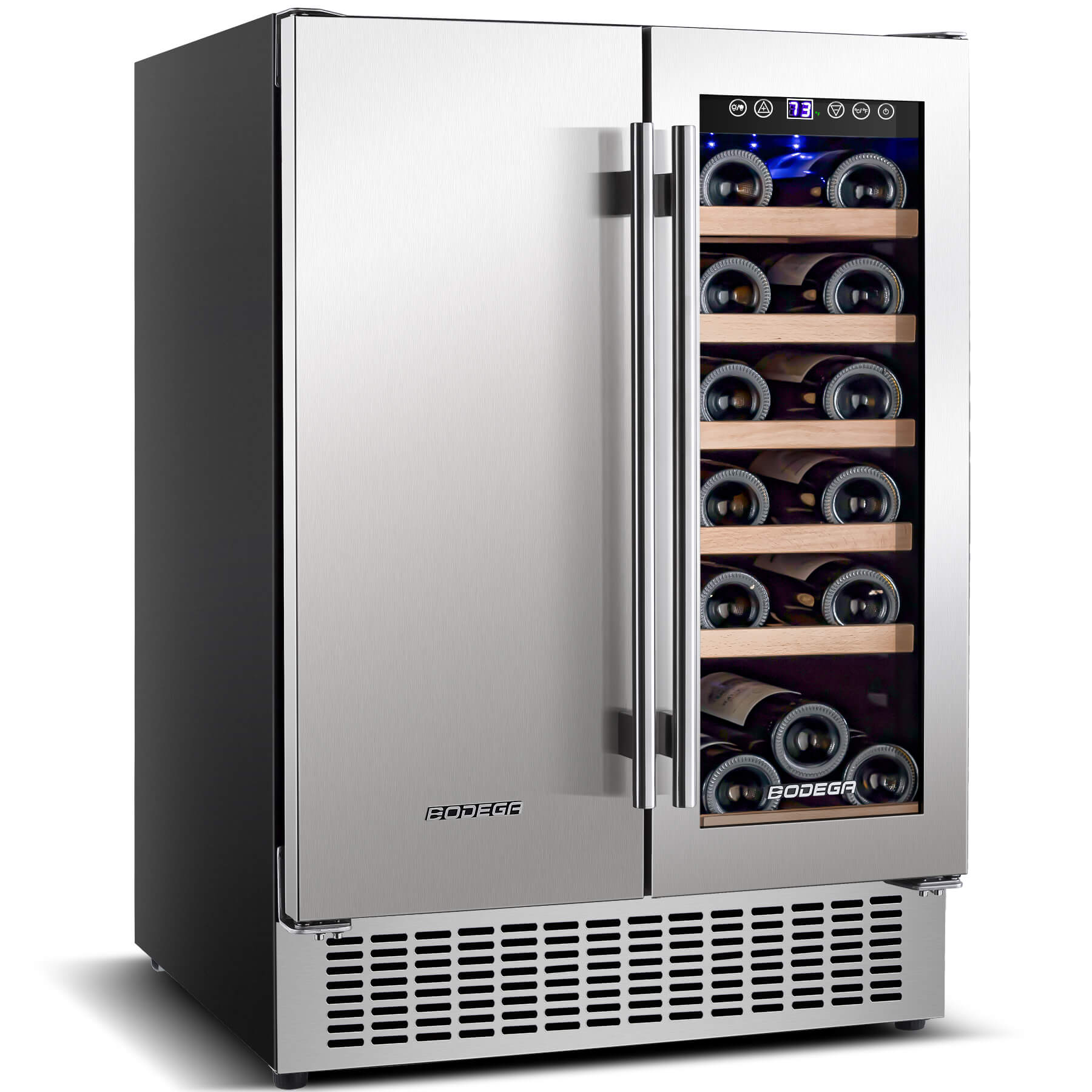
4. Wine Refrigerator Temperature Zones
Wine refrigerators come in single-zone, dual-zone, and multi-zone options. Your wine preferences will dictate the best choice:
-
Single-Zone: Ideal for primarily storing red wine as it maintains a consistent temperature throughout.
-
Dual-Zone: If you have a mix of red and white wines, consider a dual-zone cooler. It allows you to set different temperatures for each section.
-
Multi-Zone: For collectors with an extensive variety of wines, including champagne, a multi-zone wine refrigerator is the way to go. It provides separate compartments with adjustable temperature settings.
5. Light Protection
Even if your wine cooler is not exposed to direct sunlight, ultraviolet (UV) rays can still harm your wine. A completely opaque door is the best option for blocking UV rays. However, many wine collectors prefer glass doors for aesthetic reasons. If you opt for a glass door, ensure it has UV-filtering capabilities to protect your wine.
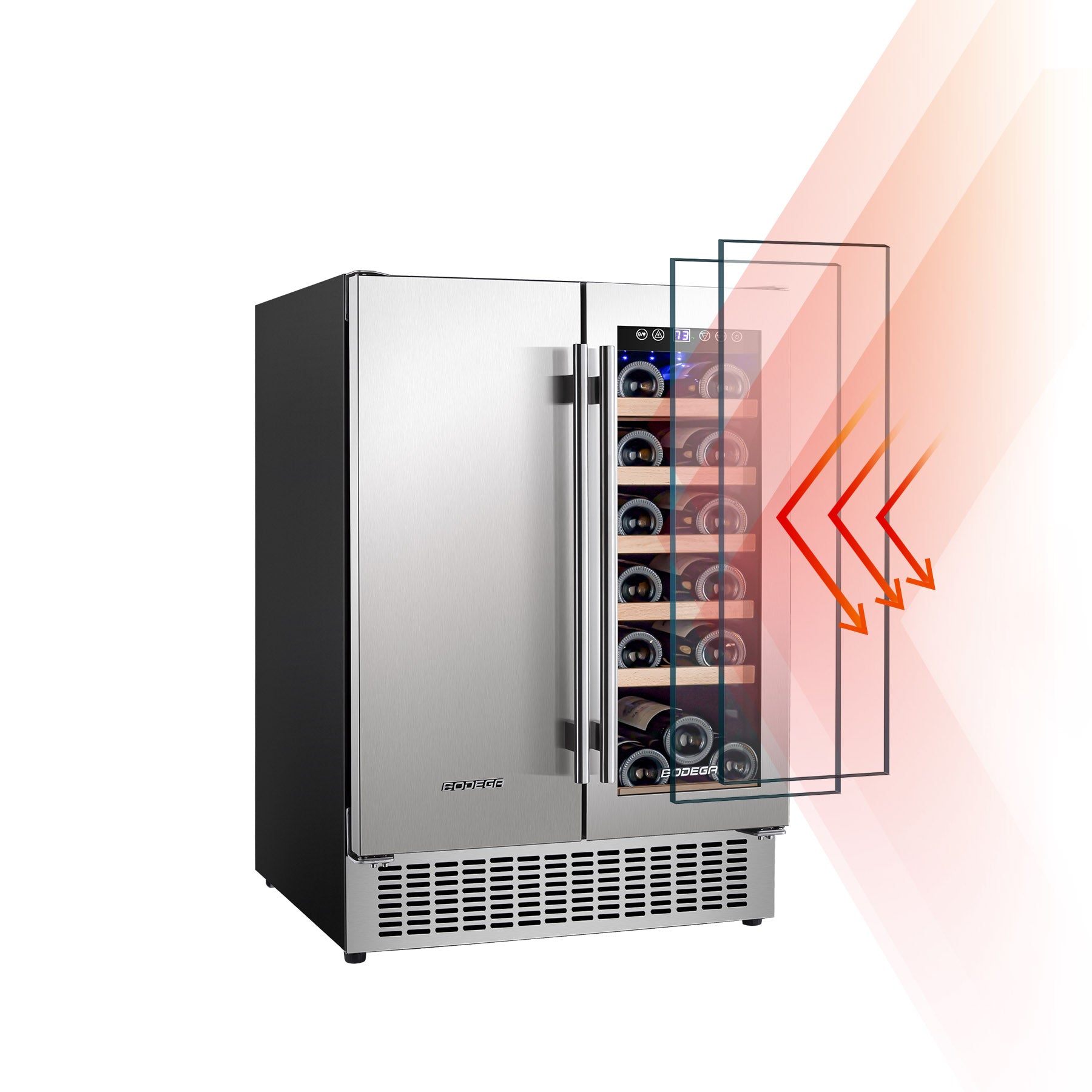
6. Air Ventilation and Purification
During wine storage, harmful gases like sulfur dioxide can be produced, which can degrade the quality of your wine. In a traditional wine cooler, natural ventilation helps dissipate these gases. However, wine coolers operate in a sealed environment. To address this, consider a wine cooler with an active carbon ventilation system. This feature allows you to maintain a pristine environment for your wine by periodically replacing the carbon filter, ensuring the air inside remains clean.
7. Humidity Control
Proper humidity control is essential for wine storage. The ideal humidity range for wine storage is between 65% and 75%. Many wine coolers lack humidity control features, and the average humidity inside these units is around 55%. This lower humidity level can cause corks to dry out and potentially compromise your wine's quality. When shopping for a wine cooler, inquire whether it has humidity control capabilities.
8. Temperature Reduction Speed and Temperature Range
When a wine cooler is first powered on, it should reduce the temperature gradually, not in a sudden drop like a refrigerator. A high-quality wine cooler can take 24 to 48 hours to adjust the temperature slowly to your desired level. Rapid temperature changes, whether heating or cooling, are detrimental to wine. Ensure your chosen wine cooler provides a gentle transition.
See more: How to Maintain and Clean Wine Cooler?
Conclusion
Selecting the right wine cooler is a crucial step in ensuring your wine collection remains in optimal condition. Consider factors like capacity, cooling method, vibration control, and temperature zones to make an informed choice. By adhering to these guidelines, you can confidently purchase a wine cabinet that meets your specific needs.
FAQs
Q1: What is the ideal temperature range for storing red wine?
A: The ideal temperature range for storing red wine is typically between 12-18°C (55-65°F).
Q2: Can I store champagne in the same wine cooler as red wine?
A: Yes, you can, but it's best to use a multi-zone wine cooler to ensure that both types of wine are stored at their optimal temperatures.
Q3: How often should I replace the carbon filter in a wine cooler with an active carbon ventilation system?
A: It's recommended to replace the carbon filter every 2-3 years to maintain air quality inside the wine cooler.
Q4: Can I use a wine cooler as a long-term storage solution for my wine collection?
A: Yes, you can use a wine cooler for long-term storage, especially if it provides the necessary temperature and humidity control. However, for extended aging, a wine cellar or specialized storage facility may be a better choice.
Q5: Are built-in wine coolers more expensive than freestanding ones?
A: Built-in wine coolers often have a higher price tag due to their customized design and integration into cabinetry. Freestanding models are typically more affordable.







